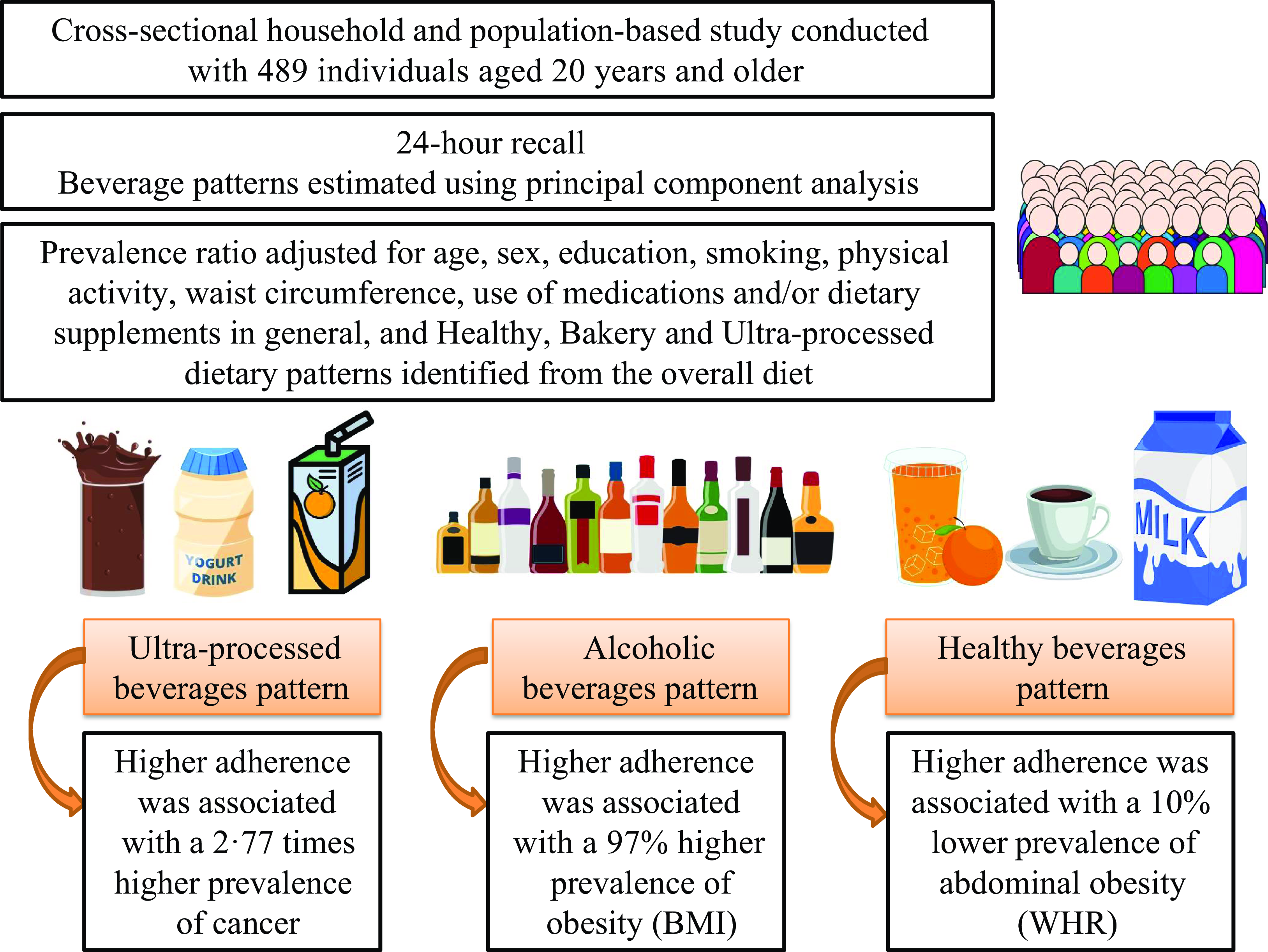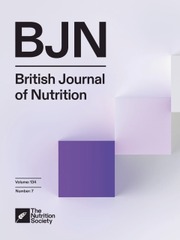No CrossRef data available.
Article contents
Patterns of beverages consumption and prevalence of non-communicable chronic diseases
Published online by Cambridge University Press: 11 October 2024
Abstract

Beverages consumption influences diet quality in general and has been associated with the development of non-communicable chronic diseases (NCCD). We aimed to verify the association between beverage consumption patterns and the prevalence of NCCD. A cross-sectional household and population-based study was conducted with 489 individuals aged 20 years and older. The presence of NCCD (arterial hypertension, diabetes, cancer and hypercholesterolemia) was obtained by self-report, while obesity was diagnosed by measuring body weight, height and waist circumference. Beverage consumption patterns were obtained by principal component analysis. The association between beverages patterns and the prevalence of NCCD was verified using Poisson regression, expressed as prevalence ratio (PR) and adjusted for potential confounding factors. Three beverage patterns were identified: ‘ultra-processed beverages’, ‘alcoholic beverages’ and ‘healthy beverages’. Individuals with greater adherence to the Ultra-processed Beverages Pattern had a 2·77 times higher prevalence of cancer (PR: 3·77; 95 % CI 1·57, 9·07). Higher adherence to the Alcoholic Beverages Pattern was associated with a higher prevalence of obesity (PR: 1·97; 95 % CI 1·13, 3·44). In contrast, individuals in the second tertile of adherence to the Healthy Beverages Pattern had a 39 % lower prevalence of hypercholesterolemia (PR: 0·61; 95 % CI 0·40, 0·92), and individuals in the third tertile had a 10 % lower prevalence of abdominal obesity estimated by the waist-to-height ratio (PR: 0·90; 95 % CI 0·83, 0·97). Beverage consumption patterns may be associated with a higher prevalence of NCCD, regardless of other risk factors. It is therefore important to conduct more studies investigating the impact of beverages patterns on health.
- Type
- Research Article
- Information
- Copyright
- © The Author(s), 2024. Published by Cambridge University Press on behalf of The Nutrition Society



